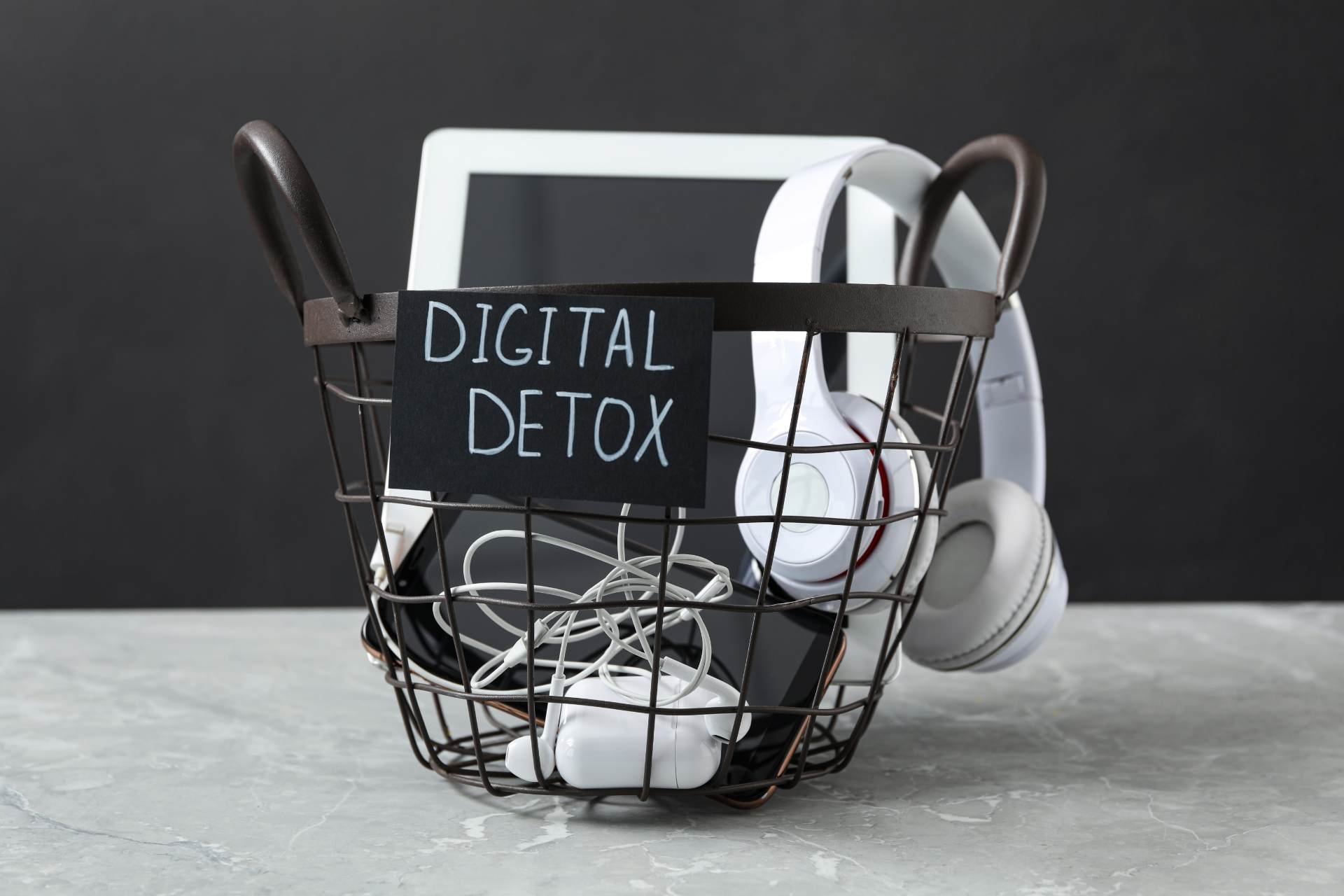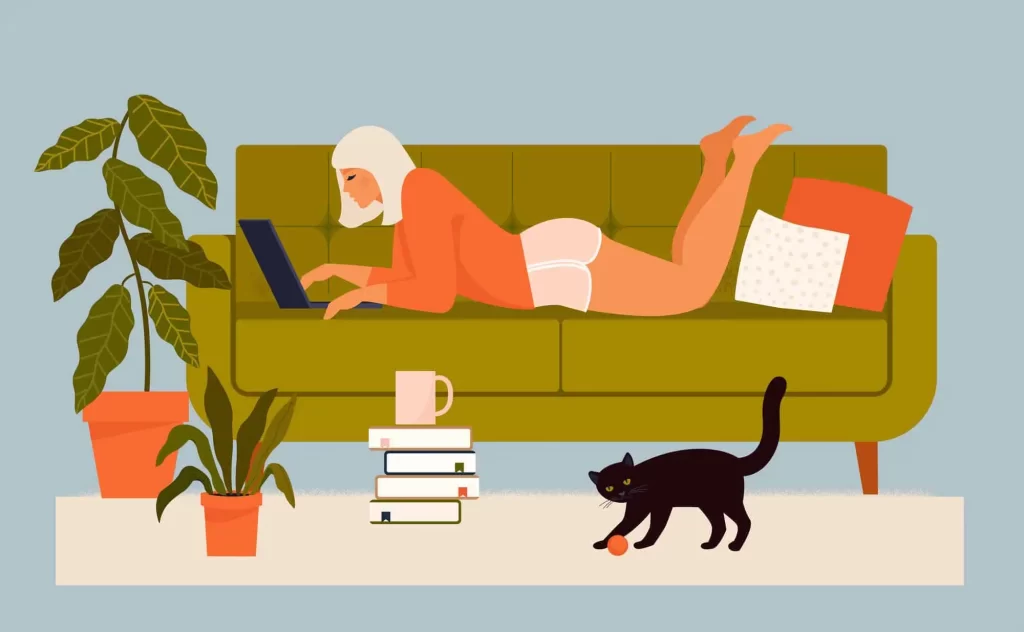Nowadays, with screens taking over our social lives, careers, and even leisure time, the concept of a digital detox is more than just a trendy catchphrase; it’s an essential part of self-care. Our mental and emotional health is suffering as a result of our digital life, whether it’s from incessant emails, doomscrolling on social media, or endless alerts.
What is a digital detox, though, and how can you begin one without feeling behind or alienated? This is all the information you need to start taking back your happiness, health, and focus.

A digital detox: what is it?
A digital detox is a deliberate separation from electronic gadgets, including computers, tablets, smartphones, and even televisions, with the goal of lowering stress, enhancing mental clarity, and reestablishing a connection with the present. Going entirely offline is not necessary. To achieve a better balance, it entails establishing limits with your technology.
Over 74% of Americans report feeling stressed out by their continual internet connectivity, according to a 2024 American Psychological Association survey. This startling figure emphasizes how important it is to take deliberate breaks from screens.

Why the New Self-Care Is Digital Detoxing
Self-care is changing. It’s now more important to safeguard your mental health and mental vitality than it is to indulge in spa treatments or eat healthily. The following explains why digital detoxification is swiftly taking center stage in contemporary self-care regimens:
Enhances Sleep: Blue light from screens can disrupt the creation of melatonin, which makes it more difficult to fall asleep.
Enhances Focus: Prolonged digital distractions shorten attention spans and decrease output.
Improves Mood: Negative news cycles and comparisons on social media can exacerbate anxiety and despair.
Enhances Relationships: Spending less time on screens allows for more meaningful in-person conversations with loved ones.

How to Begin a Digital Cleanse
You don’t have to move to a cottage in the woods to begin a digital detox. Little, doable actions can make a tremendous difference. Here’s how to introduce it gradually:
1. Establish Specific Objectives
Consider your motivations for wanting to detox. Are you experiencing burnout? Having trouble concentrating? Missing your in-person relationships? Knowing what drives you will help you set boundaries.
2. Select the Type of Detox You Want
Digital detoxification can be done in a variety of ways:
Complete Detox: A predetermined amount of time without screens, perfect for weekends or trips.
Set screen-time limits or prohibit some applications as part of a partial detox.
Social Media Cleanse: Avoid using Facebook, Instagram, or TikTok for a while.
Select one based on your needs for mental health and lifestyle.
3. Plan “Tech-Free” Hours
Set aside specific times of the day to avoid using electronics. Think about:
Morning routine: Don’t check your phone first thing in the morning.
Enjoy food and company during mealtimes without using electronics.
Winding down in the evening: Turn off devices one hour before going to bed.
These routines assist in retraining your brain to relax and concentrate.
4. Make the Most of Technology
Ironically, you can detox with the aid of internet tools:
Distracting websites are blocked by apps like Freedom or Forest.
Interruptions can be reduced by using phone settings like Focus Mode or Do Not Disturb.
Intentional use, not eradication, is crucial.
5. Establish a Calm Offline Schedule
Substitute healthful offline activities with screen time:
Perusing a book
Taking a stroll
Keeping a journal
Engaging in meditation or yoga
Regaining the enjoyment of non-digital pastimes is incredibly fulfilling and rejuvenating.
Overcoming Obstacles in Detox
It’s not always simple to detox, particularly in a society where connectivity seems essential. Here’s how to deal with typical obstacles:
Fear of Missing Out (FOMO): Remember that unplugging is a sign of respect for oneself, not of neglect.
Work commitments: Establish email hours or use auto-replies to let coworkers know your bounds.
Welcome to boredom. Reflection and creativity can result from boredom.

Begin modestly and maintain consistency.
Consistency, not perfection, is the key to a successful digital detox, as it is for any wellness habit. Your mood, concentration, and general well-being can all be significantly improved by cutting back on screen usage by even 30 minutes each day.

In a hyperconnected world, unplugging is a revolutionary act of self-care. A digital detox isn’t about rejecting technology—it’s about using it more consciously and protecting your mental space. Whether you take a full day off or just carve out a few tech-free moments each day, your mind and body will thank you.
Start today. Your peace of mind is just a power-off button away.
See more content here
- A Girl Adopted a Cat to Support Her Mental Health—Turns Out, the Cat Had More Anxiety Than She Was
- Holly the Cat’s 15th Birthday Party Goes Viral, Raises Thousands for the Local Cat Shelter
- Summer 2025 Fashion Trends: From Paris to Milan
- Living Alone Is the New Dream: Inside the Solo Living Boom
- Digital Detox Is the New Self-Care: Here’s How to Begin
